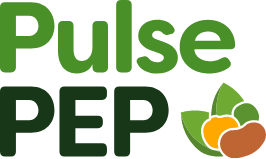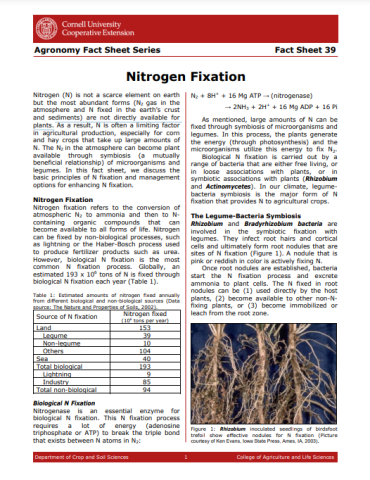Nitrogen (N) is not a scarce element on earth but the most abundant forms (N2 gas in the atmosphere and N fixed in the earth’s crust and sediments) are not directly available for plants. As a result, N is often a limiting factor in agricultural production, especially for corn and hay crops that take up large amounts of N. The N2 in the atmosphere can become plant available through symbiosis (a mutually beneficial relationship) of microorganisms and legumes. In this fact sheet, we discuss the basic principles of N fixation and management options for enhancing N fixation.
Download the factsheet below.



